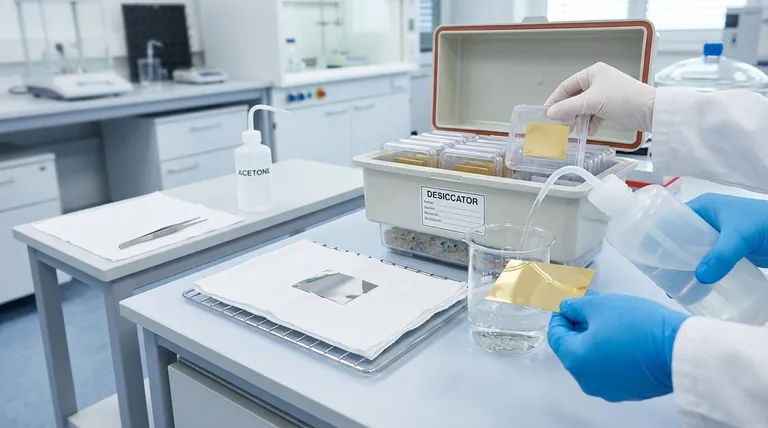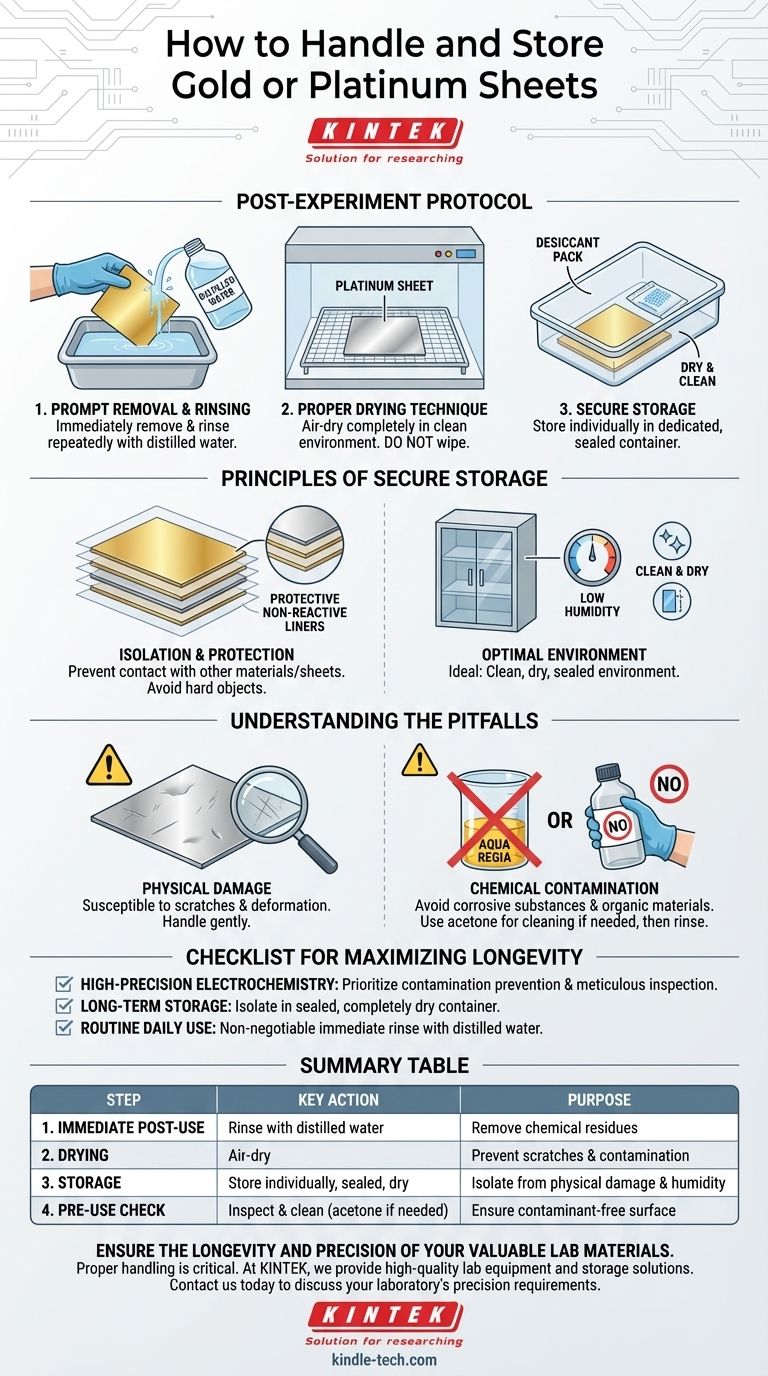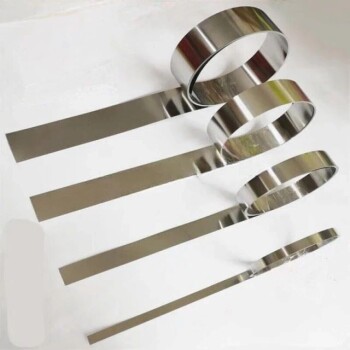To properly handle and store gold or platinum sheets, you must immediately remove them from the experimental environment after use. The core procedure involves a thorough rinse with distilled water, followed by air-drying in a clean location, and finally storing them in a dedicated, dry container that prevents physical contact with other materials.
The primary goal is not just storage but the preservation of the sheet's surface integrity. Both physical damage, like scratches, and chemical contamination can irreversibly compromise its performance in high-precision applications, making meticulous handling an essential part of your protocol.

The Post-Experiment Protocol: Immediate Actions
The moments immediately following an experiment are critical for preventing residue from bonding to the sheet's surface.
Prompt Removal and Rinsing
After use, the sheet must be removed from the operating environment without delay.
This prevents any further reaction or adhesion of substances. Rinse the sheet repeatedly with distilled water to gently and effectively clean off residual chemicals or electrolytes.
Proper Drying Technique
Once thoroughly rinsed, the sheet should be left to air-dry completely in a location that is free from dust and other airborne contaminants.
Do not wipe the sheet with a cloth, as this can introduce micro-scratches on its soft surface.
Principles of Secure Storage
Long-term integrity depends on creating a stable and non-reactive storage environment.
The Importance of Isolation
Gold and platinum are soft metals. It is crucial to store them in a way that prevents contact with other materials, especially harder objects that can cause scratches or deformation.
Storing sheets individually is the preferred method to guarantee they do not damage each other.
Choosing the Right Environment
The storage environment must be clean and dry. Humidity can promote unwanted chemical reactions or condensation on the surface.
A dedicated, sealed container is ideal for protecting the sheet from environmental contaminants and physical damage.
Understanding the Pitfalls: Why Handling Matters
The value of these sheets lies in their pristine surface. Mishandling leads to costly and often irreparable damage.
The Risk of Physical Damage
Due to their softness and thinness (often 0.1mm to 0.5mm), these sheets are highly susceptible to scratches and deformation.
Handle them gently at all times. Any physical flaw, such as a pit or scratch, can alter its electrochemical properties and invalidate experimental results. Repairing such damage is complex and often impossible.
The Threat of Chemical Contamination
You must avoid all contact with highly corrosive substances. Aqua regia, a mixture of nitric and hydrochloric acids, will dissolve gold and must be strictly avoided.
Furthermore, prevent contact with organic materials, oils, or other substances that could contaminate the electrode surface and interfere with its performance.
Pre-Use Cleaning for Contaminants
If you suspect oil or organic impurities are present, clean the surface with an organic solvent like acetone.
Immediately after using a solvent, you must rinse the sheet thoroughly with distilled water to remove any solvent residue before use.
A Checklist for Maximizing Longevity
Your handling protocol should be tailored to your specific application to ensure reliability and protect your investment.
- If your primary focus is high-precision electrochemistry: Prioritize preventing chemical contamination and perform a meticulous pre-use inspection for any surface flaws.
- If your primary focus is long-term storage: Emphasize storing each sheet in an isolated, clean, and completely dry container to prevent passive degradation over time.
- If your primary focus is routine daily use: Make the immediate post-experiment rinse with distilled water a non-negotiable step to stop residue from building up.
Adhering to these careful handling and storage principles ensures your gold and platinum sheets remain reliable assets for your work.
Summary Table:
| Step | Key Action | Purpose |
|---|---|---|
| 1. Immediate Post-Use | Rinse thoroughly with distilled water | Remove chemical residues |
| 2. Drying | Air-dry in a clean, dust-free area | Prevent scratches and contamination |
| 3. Storage | Store individually in a sealed, dry container | Isolate from physical damage and humidity |
| 4. Pre-Use Check | Inspect surface and clean with acetone if needed | Ensure a contaminant-free surface for experiments |
Ensure the longevity and precision of your valuable lab materials. Proper handling of gold and platinum sheets is critical for accurate electrochemical and analytical results. At KINTEK, we specialize in providing high-quality lab equipment and consumables tailored to your specific research needs. Our experts can help you select the right tools and storage solutions to protect your investments and enhance your laboratory's efficiency. Contact us today to discuss how we can support your laboratory's precision requirements.
Visual Guide

Related Products
- High-Purity Titanium Foil and Sheet for Industrial Applications
- Platinum Sheet Electrode for Laboratory and Industrial Applications
- High Purity Zinc Foil for Battery Lab Applications
- Aluminum Foil Current Collector for Lithium Battery
- Battery Lab Equipment 304 Stainless Steel Strip Foil 20um Thick for Battery Test
People Also Ask
- Why is platinum unreactive? The Atomic Secrets Behind Its Remarkable Stability
- What is the difference between metallic and non-metallic coating? A Guide to Sacrificial vs. Barrier Protection
- How can you improve corrosion resistance? Extend Equipment Life with Proven Strategies
- What are two disadvantages of metal? Understanding Corrosion and Weight Limitations
- What products are manufactured with titanium? The Ultimate Guide to High-Performance Materials






